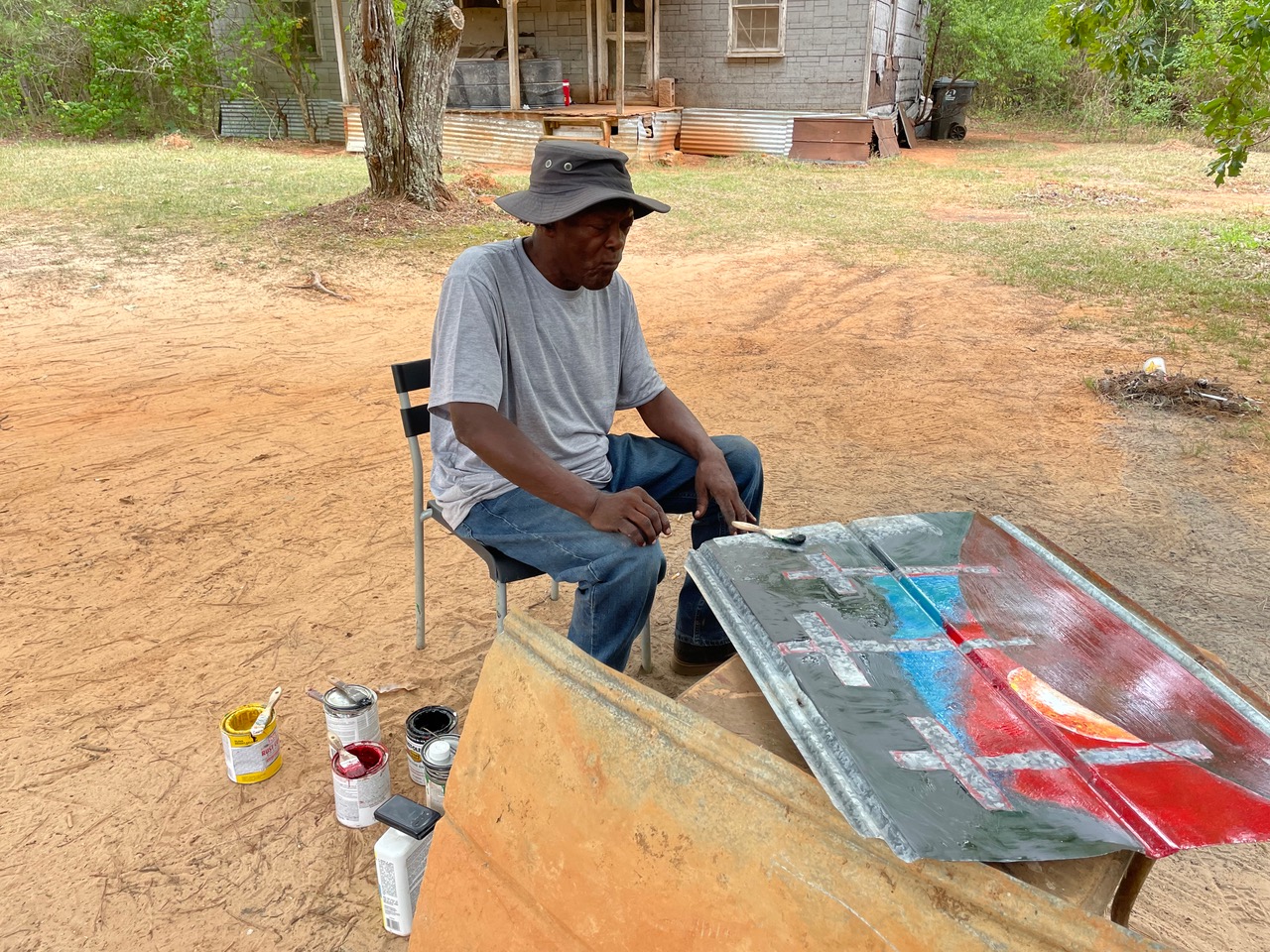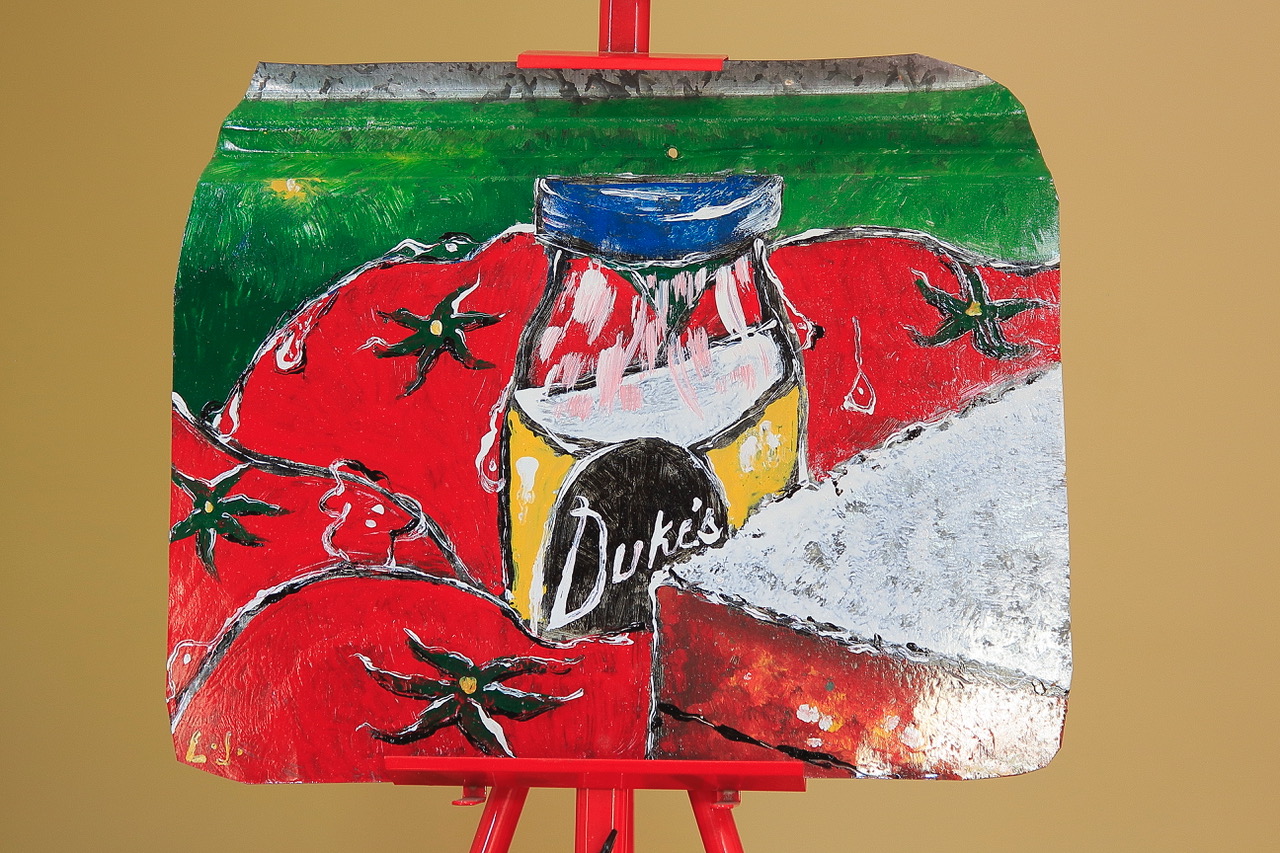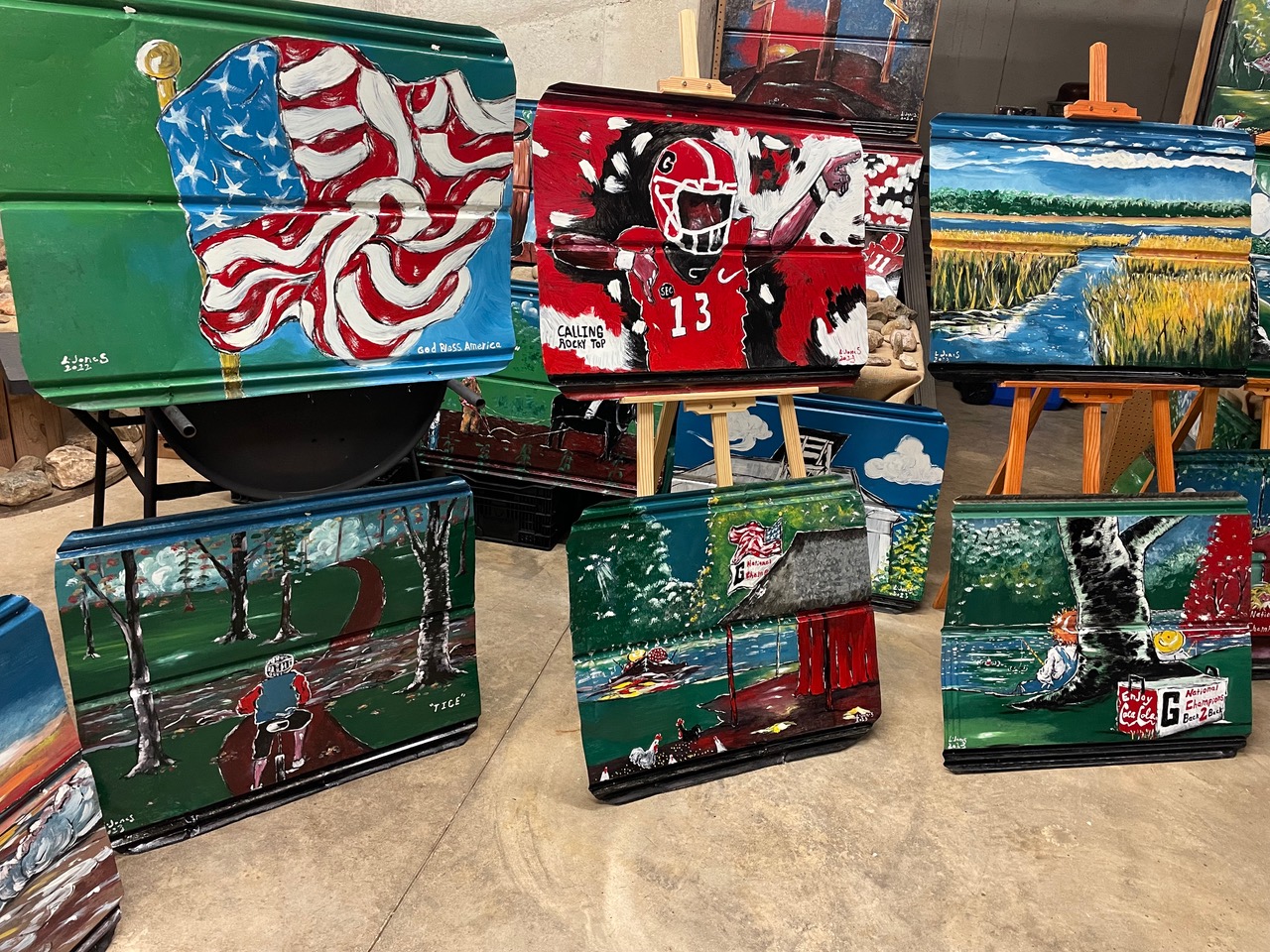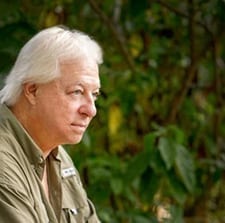Folk Artist Leonard Jones
February 1, 2024By Tom Poland
Giving Old Tin New Life
During my school days the yellow bus rolled me past chicken houses. In 1972, when I taught creative writing in Lincolnton, Georgia, I’d pass those houses each day on the way to class. At the end of my last class, a young man would place a sketch onto my desk.
The school year ended, and I entered graduate school at the University of Georgia. I forgot about the young man and his sketches. Later I moved to South Carolina, and on visits back home I began to see artwork on tin. The student who had given me his sketches? He was the man creating classic rural art.

The artist at work. Photo by Eddie Drinkard.
Today Leonard Jones portrays fields of sunflowers, collard patches, whiteface cows in pastures, hunting dogs, dairy cattle; a pick-up bed filled with watermelons, chickens pecking corn, and more.
President George H.W. Bush liked one of Leonard’s paintings so much he put it in his office and wrote Leonard a letter. Philanthropist-art patron Alice Walton of Walmart owns Leonard’s art, as does Bruce Willis. Leonard’s paintings hang in the House of Blues and galleries throughout the South. That’s quite a journey from those pencil sketches Leonard slid onto my desk in 1972.

Leonard gives Duke’s Mayonnaise a blue lid, not yellow. Photo by Tom Poland
Now it’s September 2023. Summer’s swan song is upon us. Cicadas sing. I’m at Leonard’s place to interview him for a magazine feature. Leonard, Eddie Drinkard, and I sit beneath an oak. Those chicken houses I passed long ago? Eddie supplies Leonard with tin from his dad’s old chicken houses. Eddie has bought a hundred or more of Leonard’s works and given them to friends. Among them are Brian Kemp and Kirby Smart. “Jumping Man” portrays the moment Kelee Ringo scored a pick six to ice Georgia’s 2021 national championship against Alabama.
It’s warm. The oak’s shade is welcome. In his Southern drawl, Leonard talks about his efforts to promote his art. Leonard’s melodic accent sounds musical.
“I went to New York City with a man who had a cookie company. It was a trade show we rode to. I hadn’t started flying yet. He set up his cookies and all, and I was out front painting. I got to sell some small pieces. I got to sell a few larger ones.”

Part of Eddie Drinkard’s collection. Photo by Eddie Drinkard
Leonard flew up there twenty-two times. “The 22nd time was as scary as the first time. I had to stop that. New York City was all right. I didn’t go out or nothing. I just went to make money. I did that and was ready to come back. I don’t even go out down here.”
Just how did canvases of tin come about? Leonard was painting on plywood when a local fellow stopped by. “Leonard, I know somebody in Bogart who will buy your art on tin.”
“I hadn’t ever heard the word, ‘Bogart,’ ” said Leonard. Leonard met a man in Bogart with antiques and art in his house. “I saw a piece of art on tin as tall as a door. Do people buy that I asked. He said, ‘yeah.’ I began going to the dump to scavenge tin.”
Thus began Leonard’s self-described cartoon style of art on tin. His paintings portray people playing music, picking fruit, washing clothes, hanging out clothes, and when he portrays faces they’re smiling, happy.
A man asked him why he always portrays smiling faces.
“Why do I want to paint people frowning?”
Leonard gives chickens a happy look. “I don’t want ’em to look scared like someone’s going to eat ’em.”
Sitting beneath that oak I thought about the tin Eddie gives Leonard, tin I saw as a boy. I thought of the collapsing barns I see and it occurred to me I should get some tin for Leonard too.
One final question came to me.
“Leonard, how many hours a day do you commit to your art?”
“All of them.”
I knew he was telling the truth.
Georgia native Tom Poland writes a weekly column about the South, its people, traditions, lifestyle, and culture and speaks frequently to groups in the South. Governor Henry McMaster conferred the Order of the Palmetto upon Tom, South Carolina’s highest civilian honor, stating, “His work is exceptional to the state.” Poland’s work appears in books, magazines, journals, and newspapers throughout the South.
Visit Tom’s website at www.tompoland.net
Email him at [email protected]















